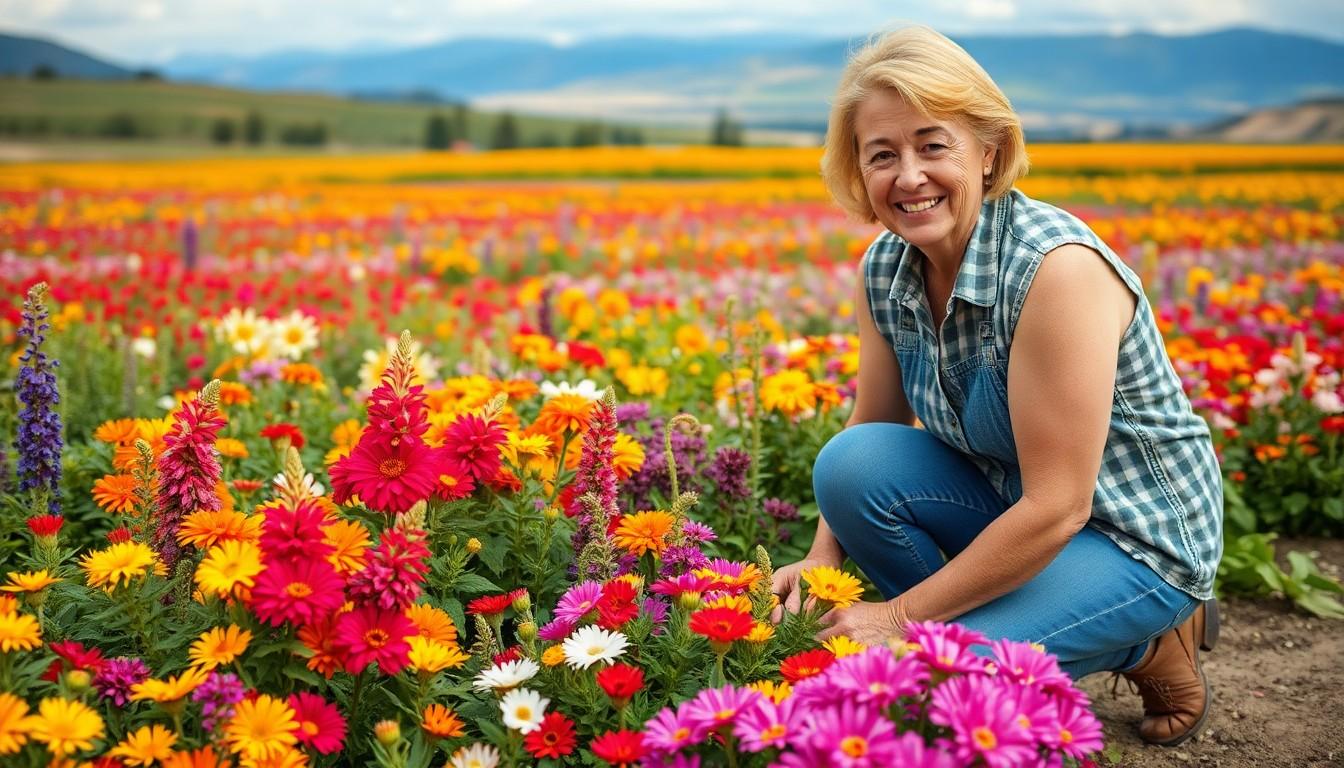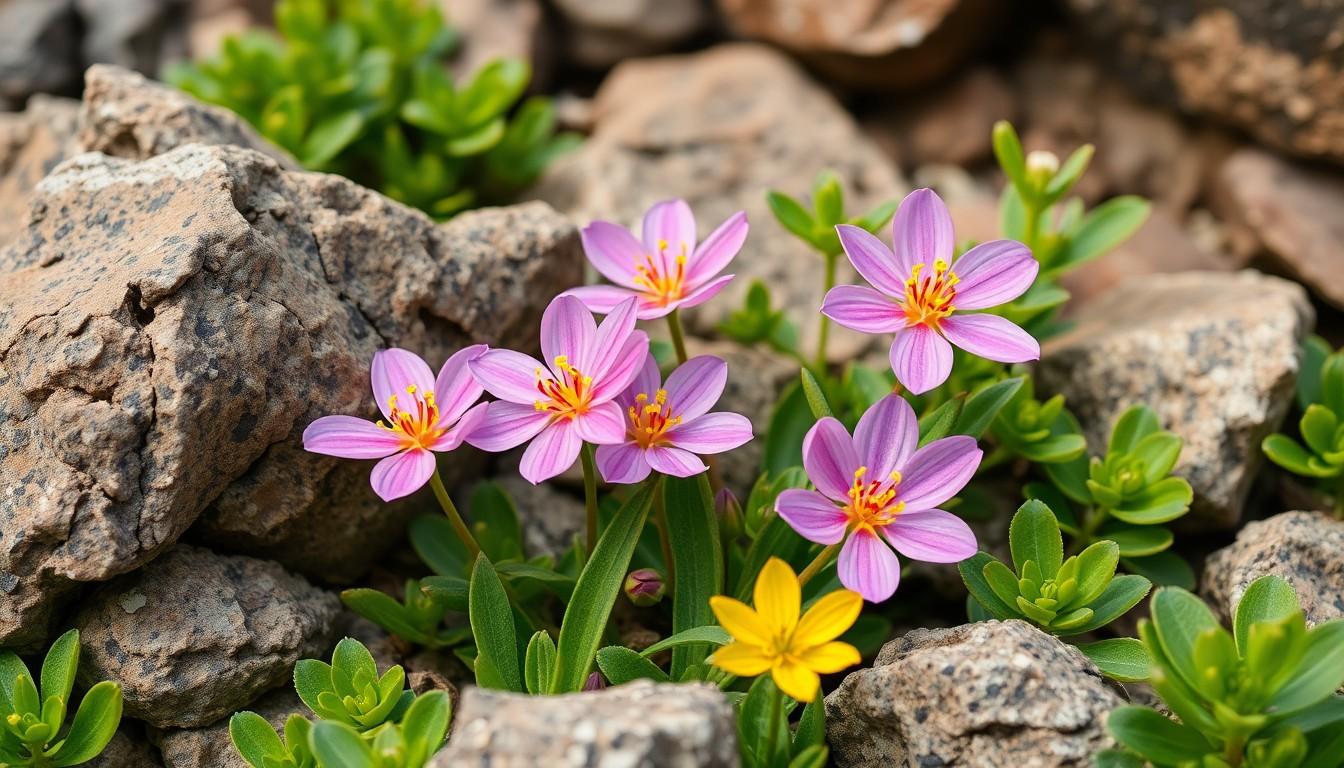Idaho’s native plants are like the underdogs of the botanical world—unassuming yet incredibly resilient. These green wonders have thrived in the rugged landscapes of the Gem State, proving that they can handle anything Mother Nature throws their way. From the towering Ponderosa pine to the delicate Idaho spring beauty, these plants are not just pretty faces; they play a crucial role in supporting local wildlife and maintaining ecosystem balance.
Overview of Idaho Native Plants
Idaho’s native plants exhibit remarkable adaptability to the state’s diverse climates and terrains. These species thrive in environments ranging from arid regions to forested mountains. Resilience is a key trait, allowing them to survive extreme temperatures and varying soil types.
Ponderosa pine represents significance among Idaho’s native plants, providing essential habitats for numerous wildlife species. Wildlife, including birds and small mammals, relies on these trees for shelter and food. Similarly, Idaho spring beauty, a delicate wildflower, blooms in spring and attracts pollinators vital for ecosystem health.
Many native plants play crucial roles in soil stabilization, preventing erosion in areas prone to water runoff. Shrubs such as serviceberry further enhance the landscape by offering berries that feed both wildlife and humans. These plants embed themselves in local culture, often featuring in landscaping and traditional uses.
Native plants also require less water and maintenance, making them suitable for sustainable gardening practices. Their presence enhances biodiversity, offering habitats for various insects and animals. Incorporating these species into gardens promotes conservation while celebrating Idaho’s unique natural heritage.
Understanding the significance of Idaho’s native flora fosters appreciation for ecosystem balance. By nurturing these plants, residents contribute to preserving the state’s natural beauty and ecological integrity. Native plants embody Idaho’s character and resilience, showcasing the importance of environmental stewardship.
Importance of Native Plants

Idaho’s native plants provide crucial benefits to the ecosystem and local culture. These species support wildlife and enhance community connections.
Ecological Benefits
Native plants play pivotal roles in maintaining ecological balance. They provide habitats for local wildlife, ensuring species such as birds and insects thrive. Soil erosion is minimized due to deep-root systems, which stabilize the ground. Water conservation becomes more effective, requiring less irrigation than non-native varieties. Pollinators are attracted to native flowering plants, fostering biodiversity essential for food production.
Cultural Significance
Cultural ties to native plants run deep in Idaho communities. Indigenous peoples have used these plants for generations, reflecting traditional practices in medicine, food, and craft. The knowledge surrounding these species showcases the relationship between people and the environment. Community gardens featuring native plants foster local pride and educate residents about their heritage. Celebrating these plants honors Idaho’s unique identity and promotes sustainability.
Common Types of Idaho Native Plants
Idaho’s native flora includes a variety of species adapted to the region’s unique environments. These plants play essential roles in local ecosystems.
Wildflowers
Idaho boasts numerous wildflowers, showcasing vibrant colors and unique shapes. Indian paintbrush thrives in meadows, attracting pollinators with its bright red hues. The delicate bluebell offers a stunning contrast, blooming in spring and spreading a sweet fragrance. Another notable wildflower, the arrowleaf balsamroot, serves as a vital earthen element, stabilizing soil and supporting wildlife. Each wildflower not only adds beauty but also enhances ecological diversity.
Shrubs and Trees
Shrubs and trees in Idaho are integral to the landscape. The serviceberry tree produces sweet berries that attract birds and other wildlife. Western juniper offers shelter and food for various species while withstanding harsh conditions. Mountain maple grows in moist areas, providing shade and habitat. Each shrub contributes to soil retention, preventing erosion and promoting a healthier ecosystem. Various trees, like the Ponderosa pine, provide critical habitats and stand as symbols of Idaho’s natural heritage.
Grasses and Groundcovers
Grasses and groundcovers in Idaho include essential species for soil health. Blue bunch wheatgrass grows in open spaces, thriving in arid conditions while preventing soil erosion. Idaho fescue offers a dense cover, serving as a buffer against moisture loss. Creeping juniper acts as a hardy groundcover, reducing weed growth and enhancing landscape stability. These plants help sustain the natural habitats while requiring minimal maintenance, making them ideal for various gardening environments.
Landscaping with Idaho Native Plants
Landscaping with Idaho native plants offers numerous advantages for homeowners. These plants require less water and maintenance, making them a sustainable choice for gardens. Native species promote biodiversity by providing habitats for local wildlife. Attractive blooms and unique foliage enhance the visual appeal of landscapes while supporting pollinators. Incorporating these plants fosters a deeper connection to the local ecosystem.
Benefits for Homeowners
Homeowners enjoy reduced water usage when landscaping with native plants. Such plants adapt well to local soil types and climatic conditions, minimizing the need for extensive care. By choosing native species, homeowners can create resilient gardens that thrive with minimal intervention. Additionally, these landscapes attract beneficial wildlife, including bees and butterflies, which contribute to healthier ecosystems. Emphasizing native species supports local culture and identity, reinforcing community connections.
Tips for Planting and Maintenance
Planting Idaho native plants works best when done in the appropriate seasons, typically spring or fall. Selecting diverse species enhances ecological balance and creates visual interest in the garden. Regular monitoring for pests is crucial, though native plants typically require fewer pesticides. Mulching around plants helps retain moisture and suppress weeds. Water new plants regularly until established, but avoid overwatering to prevent root rot.
Conservation Efforts for Native Plants
Conservation efforts for Idaho’s native plants focus on preserving biodiversity and ecosystem health. Various organizations and initiatives play key roles in these efforts.
Local Organizations and Initiatives
Non-profits like the Idaho Native Plant Society and local conservation groups actively promote the cultivation and protection of native species. Their programs include educational workshops, community planting events, and habitat restoration projects. Schools incorporate native plant curricula to foster appreciation among students. Local government initiatives often provide funding for projects that restore native habitats. These group efforts significantly enhance community involvement and ensure sustainable practices are adopted.
Challenges and Solutions
Challenges like habitat loss, invasive species, and climate change threaten native plants in Idaho. Many species face competition from invasive plants that outcompete them for resources. Addressing these challenges requires strategic planning. Restoration projects often involve removing invasive species and reintroducing native flora. Educating the public about the importance of using native plants in landscaping serves as a powerful tool for conservation. Collaborative efforts between local communities, governments, and organizations provide viable solutions for preserving Idaho’s native ecosystems.
Conclusion
Idaho’s native plants are more than just beautiful additions to the landscape; they’re vital components of the ecosystem. Their adaptability and resilience not only support local wildlife but also promote sustainable gardening practices. By choosing these plants, individuals can foster a deeper connection to their environment while enhancing biodiversity.
Community involvement in conservation efforts plays a crucial role in preserving these unique species. Engaging with local organizations and participating in planting initiatives can strengthen the bond between residents and their natural heritage. Embracing Idaho’s native flora is a step toward ensuring a thriving ecosystem for generations to come.





